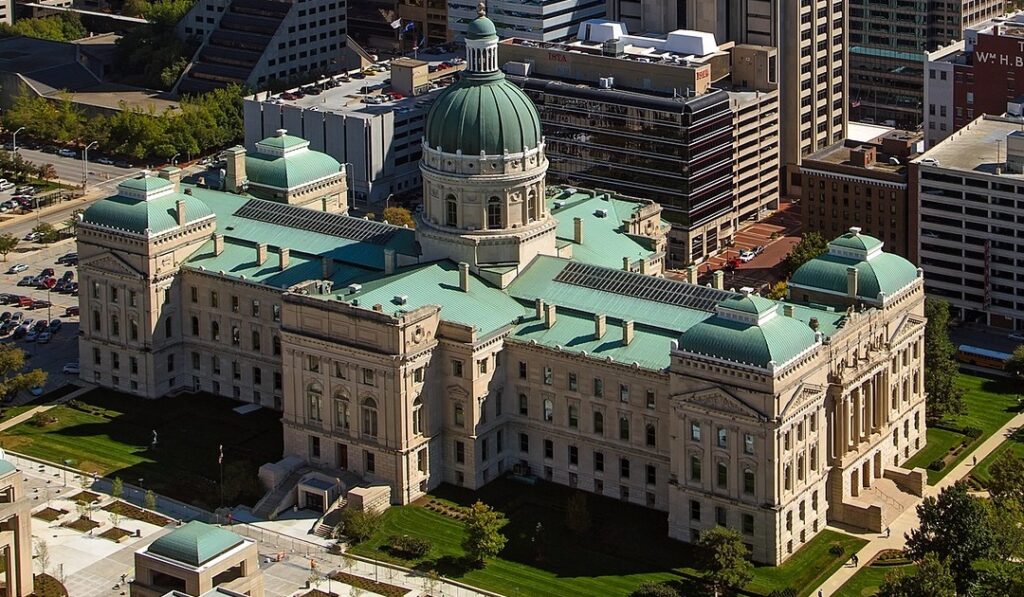Indiana Impressions: Capturing the Essence of the Heartland
Indiana, nicknamed the “Hoosier State,” pulsates with a vibrant spirit that blends Midwestern charm with a rich industrial heritage. Bordering Lake Michigan to the northwest, the State boasts of rolling plains, charming small towns, and bustling cities that played a pivotal role in American history. This exploration delves into the essence of the State, uncovering its captivating landscapes, dynamic cities, and the legacy that continues to resonate today.
A Land Sculpted by Time: Indiana’s Geological Tapestry
The geological history of the State dates back millions of years. The state’s northern terrain was sculpted by ancient glaciers, who left behind shimmering lakes and lush meadows. Limestone deposits from a shallow sea that formerly covered the area can be found in the southern part of the region. It’s growth was affected by these varied geological elements, which also contributed to the state’s beauty. The limestone resources offered excellent building materials, while the north’s fertile plains were perfect for agriculture. It’s industrial development was further spurred by the late 19th-century discoveries of oil and natural gas.
A Tapestry of People: From Mound Builders to Modern Mosaic
Long before European settlers arrived, the State was home to thriving indigenous civilizations. The Mississippian culture, known for their elaborate ceremonial mounds like Angel Mounds near Evansville, flourished in the southwestern region from 800 to 1500 CE. European exploration in the 17th century led to French colonization, with trading posts established along the Wabash River. Place names and customs still reflect French influence, especially in southern Indiana. Power dynamics changed with the entrance of the British in the 18th century, and It finally joined the US in 1816. The State was a key player in the struggle for liberty as enslaved Africans were enabled to escape to freedom via the Underground Railroad, a network of covert routes and safe homes.
A Hub of Industry and Innovation: Exploring Indiana’s Cities
The largest and capital city of the State, Indianapolis, is a thriving hub for business, sports, and culture. Known as the “Circle City” because of its distinctive radial layout, Indianapolis is the location of the Indianapolis Motor Speedway, the site of the venerable Indy 500 race. Aside from racing, the city has a strong cultural sector with renowned institutions like the Indianapolis Museum of Art that display a wide range of collections.
Located in northeastern Indiana, Fort Wayne has a long history of being a major manufacturing hub. The Fort Wayne History Center is one of the city’s museums that explores its industrial background. Because of its closeness to Michigan, South Bend—also referred to as the “Michiana” region—is a major industrial hub with a long history of producing automobiles. These cities provide an insight into It’s industrial past and current changes, as do smaller communities like Richmond and Evansville.
Beyond the City Limits: Unveiling Indiana’s Diverse Landscapes
While its cities captivate with their energy, the State offers a wealth of experiences beyond the urban landscape. The Indiana Dunes National Park, on the southern shore of Lake Michigan, features towering sand dunes, serene beaches, and lush forests, providing opportunities for hiking, swimming, and birdwatching. Brown County, nestled in southern Indiana, is a haven for artists and nature lovers. rolling hills, charming villages, and vibrant fall foliage create a picturesque scene. The State’s Caverns, a network of underground caves, offers a glimpse into the state’s geological wonders.
For those seeking outdoor recreation, Indiana State Parks like Pokagon State Park and Tippecanoe River State Park provide opportunities for camping, fishing, boating, and exploring scenic trails. The numerous lakes and reservoirs scattered throughout the state offer opportunities for water sports and relaxation. Whether seeking the charm of small towns, the thrill of exploring natural wonders, or the serenity of lakeside retreats, the State caters to diverse outdoor interests.
Indiana’s Food Culture
The State’s cuisine is a hearty blend of Midwestern staples and regional specialties. Fresh produce from fertile plains takes center stage in dishes like succotash and breaded pork tenderloin sandwiches. Comfort food classics like chicken and noodles and sugar cream pie satisfy taste buds, while persimmon pudding and beef Manhattan offer regional flair. Food plays a central role in Hoosier life, bringing people together at church potlucks, county fairs, and holiday feasts. With a growing immigrant influence and a focus on sustainable practices, Indiana’s culinary scene is both rooted in tradition and evolving for the future.
A Legacy of Leaders and Literature: From Abraham Lincoln to Booth Tarkington
The State was a major influence on the development of American history. It was home to four US Presidents, most notably Abraham Lincoln, the 16th president who presided over the country throughout the American Civil War and issued the Emancipation Proclamation. Both his ultimate resting site in Springfield, Illinois, and his childhood home in Spencer County serve as reminders of his legacy. The State has a strong literary history as well. Novelist Booth Tarkington, winner of the Pulitzer Prize, encapsulated the State’s small-town life in his works such as “The Magnificent Ambersons.” Another well-known novelist from the State, Gene Stratton Porter, authored tales honoring the natural world and environmental preservation.
These literary giants continue to inspire readers and provide a window into the State’s cultural identity. It’s contribution to American music is also noteworthy. Cole Porter, a celebrated composer, wrote timeless classics like “Night and Day” and “I Get a Kick Out of You.” It also holds a special place in the history of jazz music, with influential figures like Wes Montgomery and Freddie Hubbard emerging from the state.
Looking Ahead
The State has a promising future. The goal of the state is to draw in firms, promote innovation and entrepreneurship, and broaden its economy beyond manufacturing. Sustainability is another focus area, with initiatives promoting renewable energy sources and sustainable agricultural practices. Residents and visitors alike will find Indiana to be a warm and inviting place to live thanks to its strong sense of community and cheerful Midwestern attitude.

